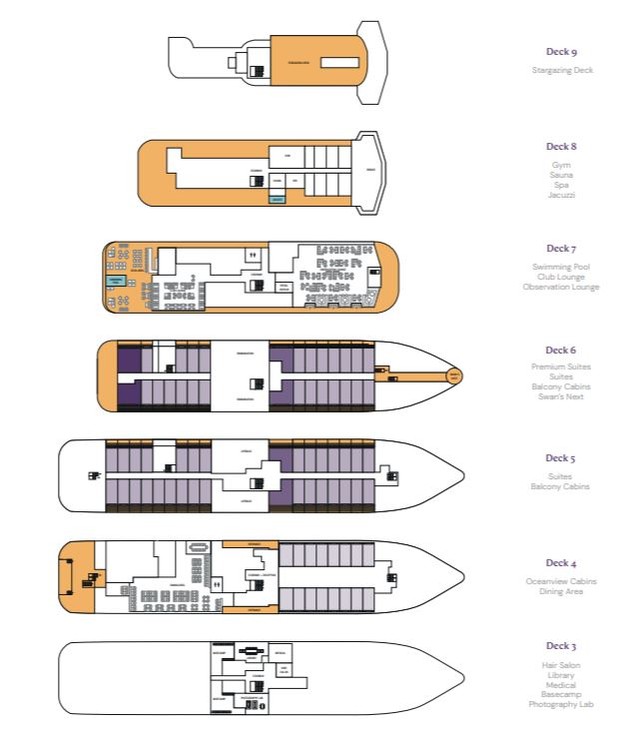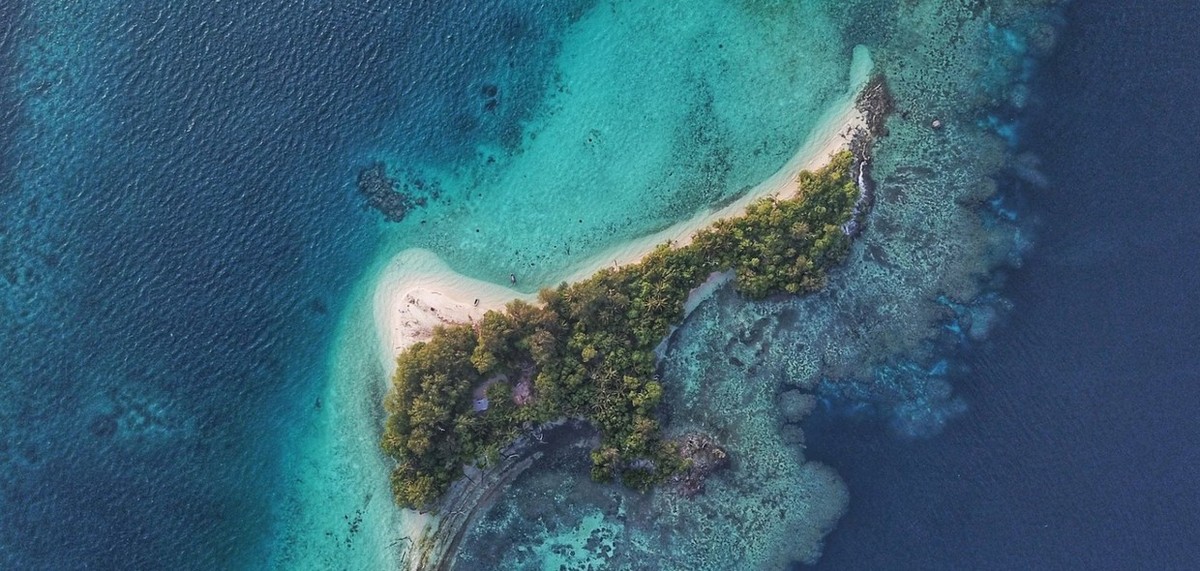
Set sail with Swan Hellenic on an unforgettable small-ship expedition cruise through Papua New Guinea and the Solomon Islands — one of the most remote and culturally rich regions on Earth. Nestled in the heart of Melanesia, this tropical paradise is home to over 850 languages, vibrant tribal traditions, and some of the most biodiverse ecosystems on the planet. Journey into the untouched Bismarck Sea, where volcanic islands rise dramatically from emerald waters, and lush rainforests give way to pristine beaches and coral reefs brimming with life.
Designed for curious and adventurous travelers, this luxury cultural expedition offers rare encounters and profound cultural insights. Visit traditional villages where ancestral customs are still celebrated through mesmerizing dances and rituals. Explore World War II relics scattered across jungle-clad islands, snorkel vibrant coral gardens teeming with marine life, and discover rare bird species and exotic flora found nowhere else. With expert guides and naturalists on board, every day promises a deeper connection to the land, people, and history of this remarkable region.
Whether you’re a history enthusiast, nature lover, or cultural explorer, Swan Hellenic’s Papua New Guinea cruise delivers a once-in-a-lifetime experience filled with discovery, comfort, and authenticity. Ideal for those seeking luxury expedition cruises or off-the-beaten-path travel, this voyage reveals the raw beauty and untamed spirit of the South Pacific. Join us and uncover a world few have seen — with the refined elegance and personalized service that define every Swan Hellenic journey.
- Explore breathtaking volcanic terrains and pristine palm-fringed beaches
- Experience rich Melanesian cultural encounters, including the famous Mudmen of Santa Ana - a symbol of the meeting point between Melanesian and Polynesian cultures
- Snorkel in crystal-clear lagoons and enjoy guided rainforest walks with expert naturalists
Availability is always subject to confirmation. Please check with us before booking flights
Prices quoted here are often dependent on currency fluctuations. Please check with (01432 507450 or info@small-cruise-ships.com) for the very latest price, which may well be cheaper than the one advertised here.
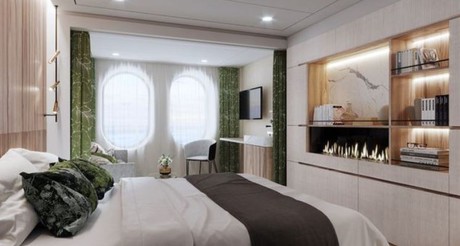

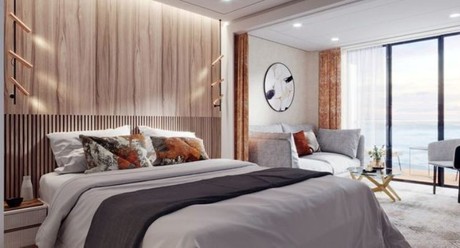

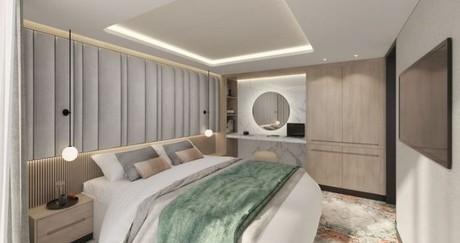
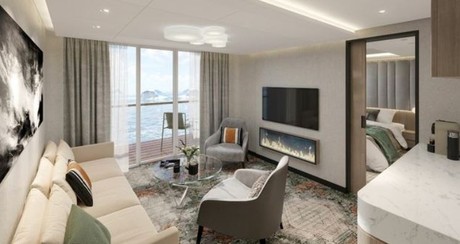
The capital of the Solomon Islands, Honiara sits on the northeastern coast of Guadalcanal at the mouth of the Mataniko River. A relatively new city, it grew up around a U.S. military base during and after WWII. In 1952 it superseded Tulagi as the premier city of these islands. Honiara’s U.S. War Memorial provides a comprehensive war-history lesson of the area. Today the town is laid-back and relatively tourist free with a real-life atmosphere.
The Florida (Nggela) Islands in the Central Province of the Solomon Islands blend natural beauty and rich history. Once the capital of the British Solomon Islands Protectorate, Tulagi Island, off the south coast, was devastated during fierce 1942 fighting after Japanese occupation. Today, it’s a peaceful town known for WWII relics, sunken warships, and wreck diving, offering a quiet reflection on its dramatic past.
In Roderick Bay, white-sand beaches and vibrant coral reefs frame calm, crystal-clear waters. A striking landmark rises from the shallows - the MS World Discoverer, an expedition cruise ship wrecked in 2001, now listing dramatically and creating an extraordinary backdrop for snorkelling adventures.
Kennedy Island, (also Kasolo or Plum Pudding Island), is a tiny forested islet named after John F. Kennedy. In August 1943, after their craft was rammed by a Japanese destroyer, the crew of PT-109, led by Lieutenant Kennedy, abandoned ship, swam ashore, before making their way to nearby Olasana Island. Kasolo Island's lush rainforests are home to the Solomon Islands fruit dove, the Solomon Islands honeyeater and the Solomon Islands flying fox.
They say good things come in small packages. Njari is a tiny island located between the Wilson Strait and Vella Gulf in the Solomon Islands’ north region. An idyllic speck in the ocean, it’s almost entirely covered in trees. With hardly any infrastructure to speak of, the coves and bays remain unspoilt. Thousands of species of fish, rays, turtles, dolphins and sharks swim around the colourful coral.
Sea days are rarely dull. Take the time to sit back and let the world go by. The ship’s observation decks provide stunning views of the passing ocean. A day at sea gives you the opportunity to mingle with other passengers and share your experiences of this incredible trip or head to our library which is stocked full of reference books. Get an expert’s view in one of our on-board lectures or perhaps perfect your photography skills with invaluable advice from our onboard professional photographers.
Your luxury expedition cruise begins in Rabaul, the former capital of Papua New Guinea’s New Britain island. Located inside a flooded caldera, the town’s proximity to a volatile volcano – plus aerial bombardment during World War II – has forced it to rise from the ashes more than once. Most recently the town was rebuilt after widespread destruction caused when Mount Tavurvur erupted in 1994. Thanks to its impressive harbour, buzzing markets and fascinating wartime past, Rabaul is an exciting place to visit. There’s an observatory in the town’s centre, which monitors the country’s two volcanic arcs, and a small museum located in what was a Japanese bunker.
The island of New Britain features the secluded volcanic Kimbe Bay, renowned for its diverse marine ecosystem. The crystalline waters host coral reefs teeming with colourful tropical fish, WWII wrecks and coral-capped seamounts. Inland, treks lead to an active volcano and the rejuvenating thermal waters of the jungle-clad Garu Hot River. The bay's rainforest is home to Blyth’s hornbills, eclectus parrots and red-knobbed imperial pigeons.
Tiny, far-flung Garove is part of the Vitu Islands in the Bismarck Sea and is defined by its rich marine biodiversity. The island wraps around a massive, horseshoe-shaped flooded caldera. Nearby dive sites reveal multi-hued fish darting among sea fans and anemones, while reef sharks, schooling jacks, and barracuda patrol the deep. Back on dry land, tiny villages nestle amid towering coconut palms.
The inhabited Tami Islands, a four-island archipelago south of Finschhafen in the Huon Gulf, are home to skilled carvers. These islanders craft intricate hardwood bowls, particularly the renowned 'Tami bowls' known for their fine craftsmanship and ceremonial use. These bowls, featuring spirit faces with a distinctive three-peaked headdress (oa balan), are highly valued, with some found in New York’s Metropolitan Museum and the British Museum.
Characterised by dense rainforest, the miniscule volcanic island of Crown Island is barely five kilometres from end to end. Rugged jungle trails offer glimpses of birds of paradise, doves and pigeons, while sapphire waters hide colourful coral reefs beneath the surface. Nearby Kar Kar Island is home to one of the country's most active volcanoes, sprawling cocoa plantations and traditional villages dotted among imposing coconut palms.
Madang, a laid-back port town exuding a village vibe, presents a captivating blend of Pacific war history and natural beauty. At the Visitors and Cultural Bureau, WWII artefacts and exhibits recount the battles for this strategic outpost. The surrounding waters host coral reefs teeming with marine life. Rocky hiking trails traverse Mount Wilhelm, offering panoramic views, extending the allure beyond the town.
Manam Island is marked by an active stratovolcano, occasionally emitting ash plumes. The island's rugged valleys, forested crags, villages and cultures coexist in the shadow of this natural colossus. The area boasts numerous coral reefs, and Hansa Bay holds sunken American and Japanese ships, along with bombers and fighter planes. These waters have also witnessed sightings of hammerheads and tiger sharks.
The Sepik River gracefully winds through rainforest and swampland, revealing tribal villages and stilt structures on muddy banks. In these homesteads, traditional ways of life persist with tribal ceremonies, spirit houses, and stories behind intricately carved masks and totems. Crocodiles, symbols of power, coexist with revered birds of paradise like Goldie's and sicklebills, punctuating the landscape with bursts of bright plumage.
Wewak, East Sepik's capital, is a coastal gateway to the vast Sepik River, a winding lifeline through lush sago swamps, nipa palms and tranquil lagoons. Along its banks, stilted villages uphold vibrant traditions, from canoe travel to crafting intricate masks, wood carvings and towering Haus Tambaran spirit houses. Wewak also holds echoes of WWII history, with relics and the Cape Wom Memorial marking Japan’s surrender in Papua New Guinea.
Jayapura, Papua's provincial capital, serves as a base to explore the rugged Baliem Valley. Winding trails lead through verdant highlands to secluded waterfalls and saltwater springs. Traditional life endures in tribal villages hidden in the rainforest, featuring religious ceremonies or mock tribal wars. In Jayapura, museums recount the intense WWII battles, where Allied and Japanese forces clashed for control of the Pacific theatre.
Itineraries are subject to change.
Minerva
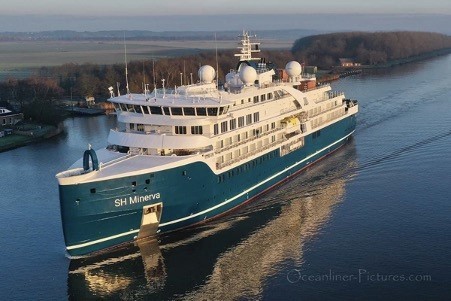
| Launch | 2021 |
|---|---|
| Max passengers | 152 |
The 5 star elegant Scandi-design boutique ship offers you an intimate setting from which you will be fully immersed in all the sights and scenery of your voyage.
Introducing SH Minerva
Minerva has been designed to journey to off the beaten path destinations and remote polar regions in style and comfort. The ship incorporates a PC5 ice-strengthened hull combined with extra-large stabilisers to make your journey as smooth as possible.
Sophisticated Elegance
We know how important outdoor space is, so our spacious, relaxing public spaces provide wide open, unobstructed views throughout the ship. The destination will always be in view.
Your Wellbeing
The safety & happiness of the guests is paramount to the 120-strong crew on board as well as the passionate expedition team who'll be serving up thrilling shore excursions and lasting memories.
Cabin Types
The 76 cabins including 6 suites have all the amenities you will need to feel comfortable including dressing gowns, hairdryers, personal safes and minibars. The stylish cabins all have desks, a dressing area and comfy seating. En suite bathrooms all feature glass-enclosed rain showers.
Wheelchair access
Guests who use wheelchairs must bring their own, as we have only a small number of wheelchairs stored onboard for emergencies. To ensure ease of movement on the ship, wheelchairs and mobility aids must be no wider than 65cm. All mobility or medical equipment brought on board must be capable of being carried safely and must be declared before sailing. To ensure that all guests can safely evacuate during an emergency, guests requiring a wheelchair can only be accommodated in our ADA-accessible cabins.
There is an Oceanview stateroom on Vega which is specifically designed to be completely ADA compliant and have a fully operable wheelchair-access wet unit.
Vega has two lifts, serving every passenger deck apart from the Stargazing top deck, which is, therefore, more difficult to access, as are the Aft Marina and Swan’s Nest forward observation platform. Also, we don’t have special equipment to access the swimming pool, jacuzzi, or sauna. Otherwise, the ship is entirely at your disposal.
Many of the expeditions ashore in remote places are by Zodiac. Boarding these boats and returning aboard can present challenges for wheelchair users, as can navigating uneven terrain. These challenges are by no means always insurmountable, though, and our highly experienced crew is trained to provide reliable advice and assistance. They will make every effort to ensure wheelchair-using guests enjoy a memorable experience at each destination. Our general guidance, however, is to recommend wheelchair users travel with a companion for their ease and enjoyment.
If you prefer to remain aboard, our panoramic interiors and ample open decks ensure an immersive, intimate experience of your inspiring surroundings.
Deck plans are for illustrative purposes only – The actual ship and cabin layout may differ.
